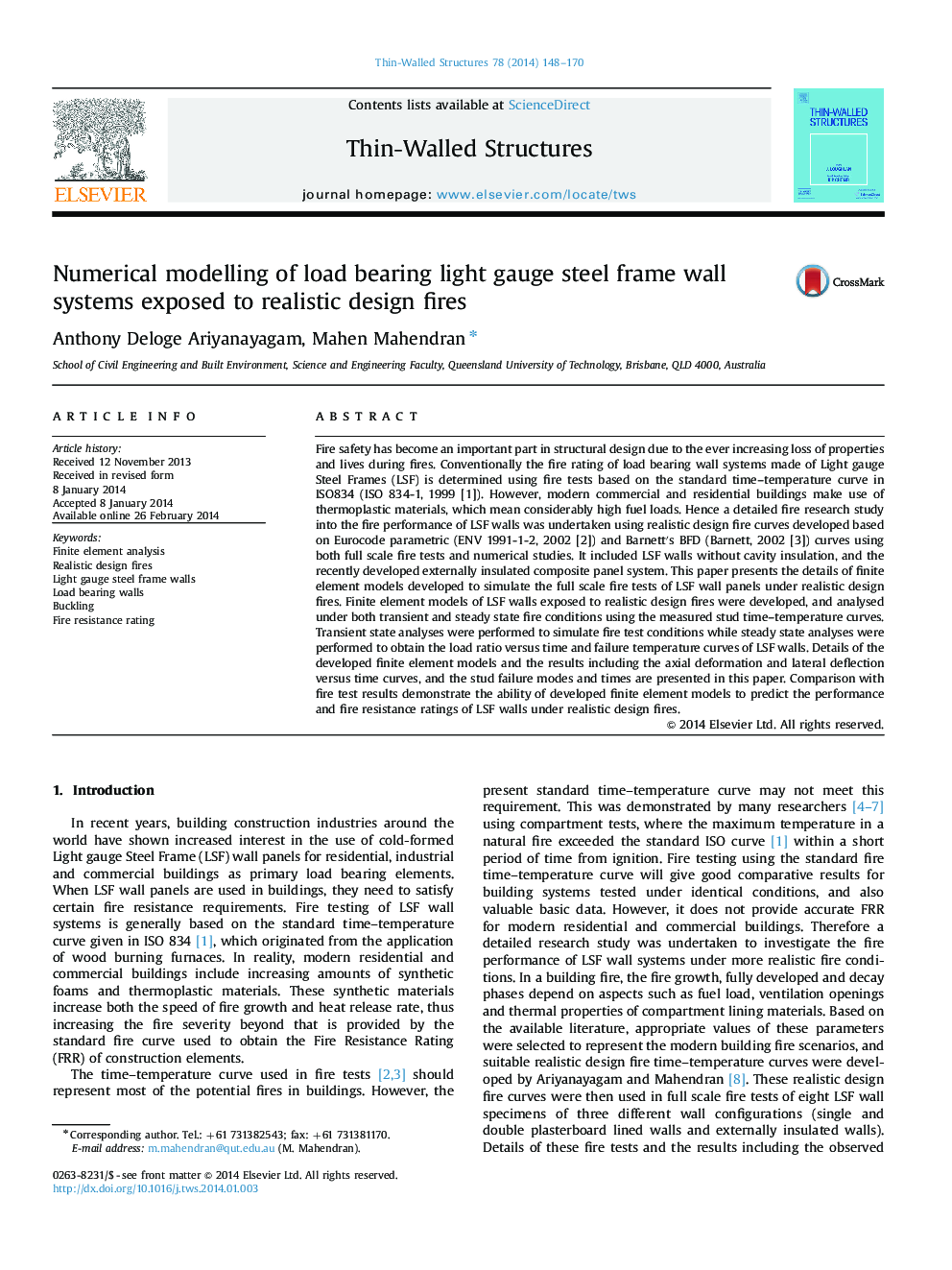| Article ID | Journal | Published Year | Pages | File Type |
|---|---|---|---|---|
| 309011 | Thin-Walled Structures | 2014 | 23 Pages |
•Finite element models of LSF walls exposed to realistic design fires were developed and validated using fire test results.•Both transient and steady state analyses were performed using measured stud time–temperature curves.•Three LSF wall configurations and two realistic design fire curves were considered.•Good agreements were obtained for the failure times of wall studs.•The use of developed finite element models can be extended to LSF walls subject to other real fires.
Fire safety has become an important part in structural design due to the ever increasing loss of properties and lives during fires. Conventionally the fire rating of load bearing wall systems made of Light gauge Steel Frames (LSF) is determined using fire tests based on the standard time–temperature curve in ISO834 (ISO 834-1, 1999 [1]). However, modern commercial and residential buildings make use of thermoplastic materials, which mean considerably high fuel loads. Hence a detailed fire research study into the fire performance of LSF walls was undertaken using realistic design fire curves developed based on Eurocode parametric (ENV 1991-1-2, 2002 [2]) and Barnett's BFD (Barnett, 2002 [3]) curves using both full scale fire tests and numerical studies. It included LSF walls without cavity insulation, and the recently developed externally insulated composite panel system. This paper presents the details of finite element models developed to simulate the full scale fire tests of LSF wall panels under realistic design fires. Finite element models of LSF walls exposed to realistic design fires were developed, and analysed under both transient and steady state fire conditions using the measured stud time–temperature curves. Transient state analyses were performed to simulate fire test conditions while steady state analyses were performed to obtain the load ratio versus time and failure temperature curves of LSF walls. Details of the developed finite element models and the results including the axial deformation and lateral deflection versus time curves, and the stud failure modes and times are presented in this paper. Comparison with fire test results demonstrate the ability of developed finite element models to predict the performance and fire resistance ratings of LSF walls under realistic design fires.
